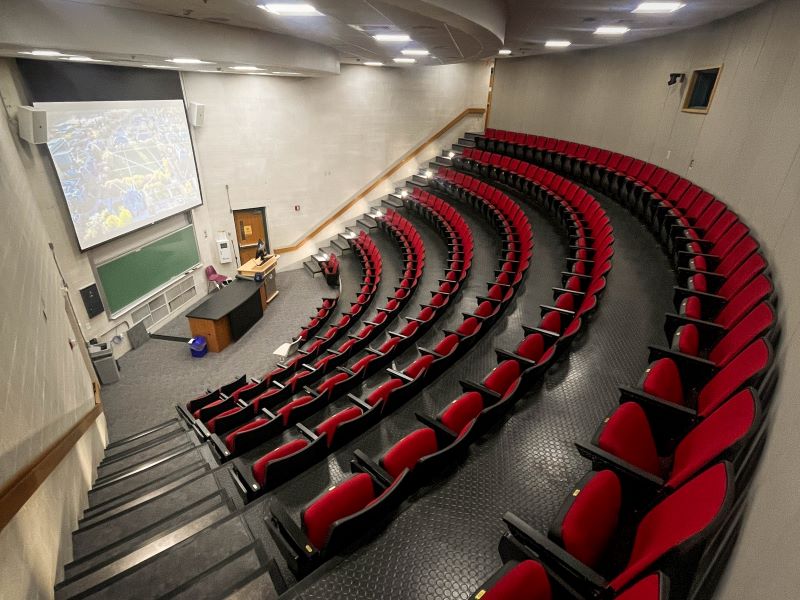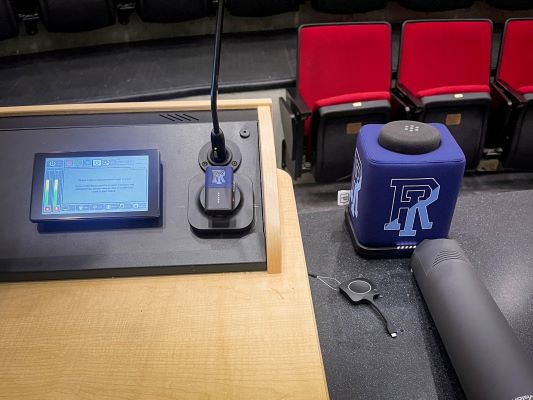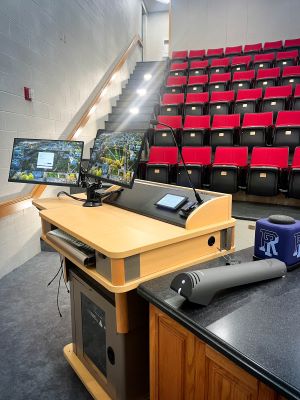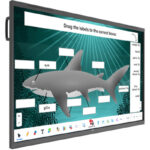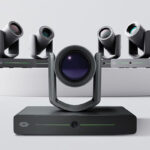The University of Rhode Island (URI), recognized as the #1 public university in New England by the Wall Street Journal and home to over 15,000 students, stands out for its excellence in pharmacy, engineering and biological sciences.
As modern higher education demands technologies like lecture capture, voice amplification, and hybrid learning, URI’s AV team has been pivotal in ensuring seamless and equitable learning experiences.
Leading this effort is Jeffrey Levesque, lead information technologist, who has spent nearly a decade managing and standardizing diverse AV technologies across campus. Among the solutions, the Catchbox Plus system emerged as a reliable and user-friendly choice, addressing URI’s audio needs effectively.
Managing Complexity in a Diverse Environment
“Lead Information Technologist doesn’t tell the full story,” Levesque says. “In practice, I’m the AV designer, engineer, programmer and support for the campus.”
URI’s and Levesque’s journey with classroom technology is one that many universities and AV teams will find familiar with. What began as a few tech-equipped spaces rapidly expanded, especially during the pandemic, resulting in a diverse array of technologies across classrooms. This diversity, while born out of necessity, quickly became unmanageable.
“Every room looks different,” Levesque explains. “You might have different endpoints, one screen or multiple screens. We get a lot of questions, especially in the summertime when instructors are trying to figure out where they are teaching in the fall.”
This inconsistency led to a flood of support requests, particularly at the beginning of each academic year. The small AV team of just four people, responsible for managing technology in about 150 rooms, found themselves overwhelmed – “the call volume was unbearable,” recalls Levesque.
Common tasks included instructing on the technology, recharging misplaced mics, appeasing frustrated lecturers, and endlessly changing out broken lavalier mic wires. “Instructors kept wiring up wrong and breaking them in the process. It happened so much, I stopped getting the really high-quality ones, as they would break them anyway,” Levesque admits.
Adding to the complexity was the need for hybrid learning capabilities, thrust into the spotlight by the pandemic. Many classrooms lacked the necessary audio equipment to support this format effectively.
“The pandemic forced my campus to jump forward and do hybrid learning. I need to get audio in all my classrooms now because only the big spaces had any sort of microphone technology,” Levesque says.
Standardization & Simplification with Catchbox Plus
Facing these challenges, Levesque embarked on a mission to create a standardized setup across all rooms, carefully choosing technology that would form part of that standard. The Catchbox Plus wireless microphone system emerged as the perfect solution for their audio capture needs.
“We’re putting a Catchbox Plus in every classroom,” Levesque states. “By the time we’re done, we’re going be right around 150 of them across campus.”
Levesque chose Catchbox for its reliability, user-friendliness and versatile connectivity options. Or, as Levesque says, “Simplicity, simplicity, simplicity!”
Reliability & Ease of Use
Compared to their previous audio systems, which were often complicated and challenging to maintain, Catchbox offered a much simpler, more efficient solution.
“For me, it’s not just about delivering crisp, clear audio. It’s equally important that the system is easy for my instructors to use. The simpler the setup, the better,” Levesque explains. The Catchbox Plus wireless microphone system delivers exactly that. Whether using the Clip or the Cube, the process is seamless — just pick it up, and it’s ready to go.
Levesque finds the magnetic docking stations to be particularly well-suited for the classroom environment. “I can have the charging station on the lectern and the magnet ensures the mics are always in the right place and charging for the next user. Unlike our previous solutions that needed to be carefully connected to the charger in a specific way – something instructors would fail to do over and over again.”
Another load off of Jeffrey’s shoulders was that Catchbox worked out of the box – he wouldn’t have to go into settings and adjust sound levels for each setup. “It picks up audio tremendously. It just comes through sounding clean no matter whether they’re holding the Cube up close and personal, or they hold it further away. It picks them all up equally and everyone comes through sounding great.”
The team also found that Catchbox required minimal maintenance compared to their previous systems.
“At the start of this year, we were like – where are the calls? With Catchbox, support tickets and general maintenance have gone way down,” Levesque notes.
Related: Catchbox Wins Top New Technology (TNT) Award at ISE 2025
Versatile Connectivity & Integration
Catchbox’s versatile connectivity options were another significant advantage. Whether integrating with their existing AV-over-IP (AvoIP) system or providing a simple USB connection for hybrid learning, Catchbox delivered.
“Why we like the Catchbox so much better is that if I don’t have a DSP in the room, I know I can take the USB out on that and feed that to a computer and I’m good,” Levesque explains.
The ease of installation was also a major plus. Levesque adds, “They were easy to install. Because they’re also PoE powered, I just have to plug in my single network cable, and we pop up online. I go into my Dante controller and I send it where it needs to go.”
Levesque says, “Whenever I’m evaluating AV tech, the first question I have is – does it integrate with what I’m using as the control system for my classroom? Catchbox’s many integrations meant I didn’t have to worry on that front.”
An Effortless Way to Boost Student Engagement
Perhaps most importantly, Catchbox has helped boost student engagement, particularly in large classrooms where interaction was previously challenging.
“Everyone, anytime anyone gets to use the Cube, they’re blown away by how well it works,” Levesque shares, when asked about what the end users think of Catchbox. “Instructors like that there’s more engagement in the classroom now. It’s more interactive for them,” he says.
The unique design of the Catchbox Cube has turned asking questions into an engaging activity that students genuinely want to participate in. Previously, handheld mics were passed around for audience engagement, and wanting to ask a question was often met with a collective groan from peers, as it would mean awkwardly passing the microphone hand-to-hand across the hall and disrupting the flow of the lesson.
“Now, students are eager to engage, even if it’s just to throw the Cube. And instructors are happier because of the active audience,” Levesque shares.
URI also appreciates the branding feature – being able to put the university’s logo on the microphones. “It’s somehow a small bonus and a massive benefit at the same time,” Levesque shares. “We’re already branding the lecterns, and visibility and recognizability are very important for the university.”
Looking Ahead
As URI continues its journey towards a fully standardized AV setup across all classrooms, Catchbox has become an integral part of their strategy. When asked if Levesque would recommend the Catchbox solution to others. He confidently endorses this solutions, stating, “I already do. I tell them – it’s going to make your life easier on campus.” His recommendation underscores the value Catchbox delivers, making it a practical choice for institutions aiming to elevate their campus-wide AV capabilities.

